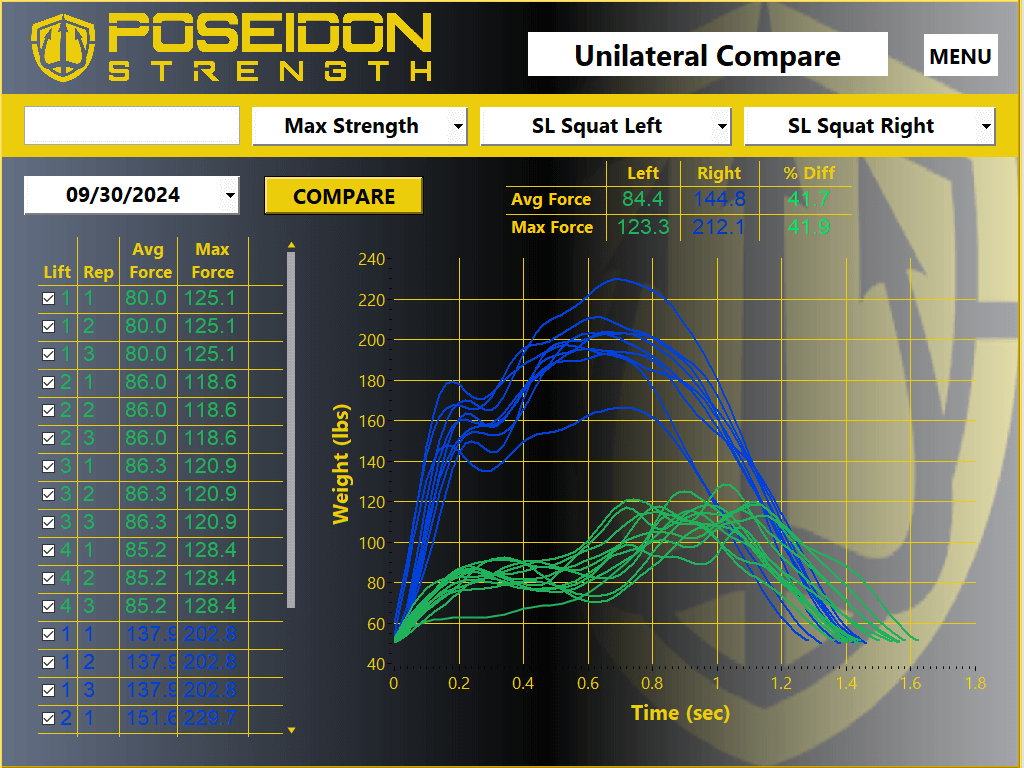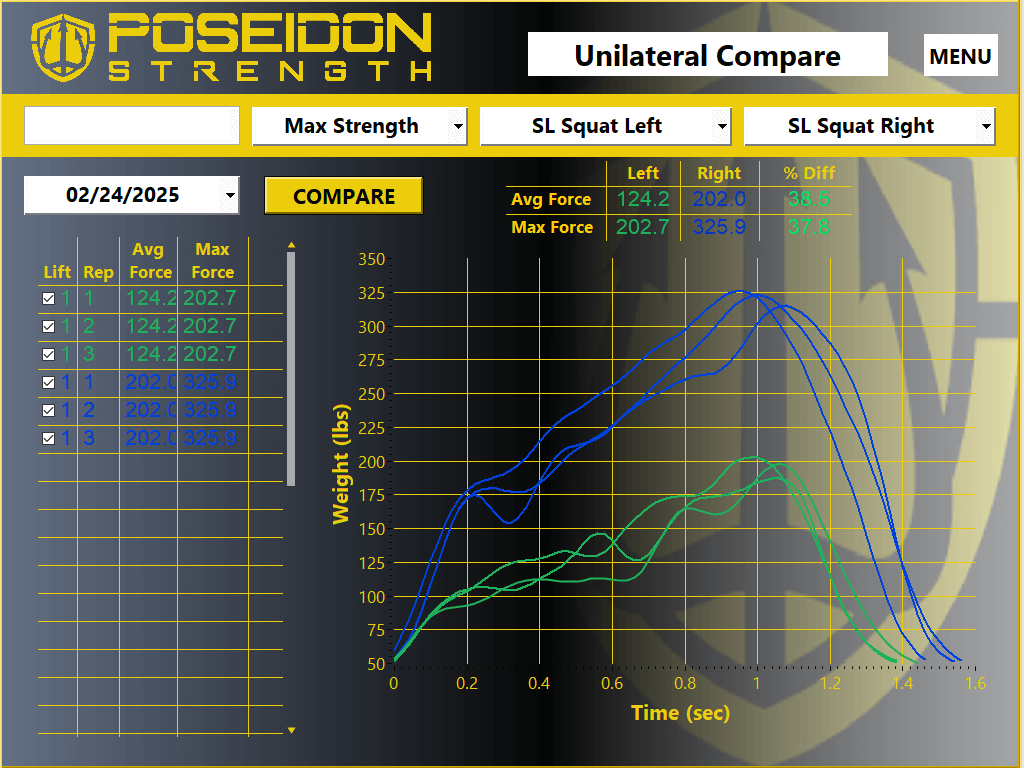Why Isokinetic?
There are mountains of data to support the proven benefits of isokinetic resistance. The only issue, it has never been applied to functional movement in an easy-to-use format.
What is Isokenetic?
Time under tension + max effort
Time under tension is proven to build strength and power, but traditional methods are tempo-based, not effort-based. ForceTrain® Technology regulates time under tension by controlling velocity while safely supporting maximal exertion on every rep.
Max effort strip set > RPE
Replace “perceived exertion” with real, max effort exertion, every rep. Set the velocity. Get to work. See the results in real-time.
Our system is isokinetic and entirely self-contained. Weights are no longer required. The system adapts to user force input to maintain speed. Our onboard display then visualizes the strength curve instantly.
Safely get back under the bar sooner. See results faster.
Who
benefits?
Sports Med.
- Unilateral assessment in under 90 seconds
- Earlier intervention for closed-chain movement
- CNS activation
- Neuromuscular adaptation
- Increased joint stability
Strength
- Rapid force-velocity profiling = faster onboarding
- Movements that reflect training
- Controlled environment for late-stage RTP athletes
- Strength gains without DOMS
- Efficiently test isometric and isokinetic movement
Athlete
- Safest environment for RTP or max effort lifts
- Immediate feedback
- Intuitive software
- Easy-to-understand data
- Buy-in to the process
The Science
The Journal of Sports Science and Medicine (2016): Effects of Multi-joint Isokinetic Resistance on Muscle Strength and Endurance:
- …six weeks of multiple-joint isokinetic resistance training increased dynamic maximal muscular strength and endurance
- Subjects significantly increased 1RM bench press, bent-over strength, and increased maximal push-up performance.
- …data shows that multi-joint isokinetic resistance training has direct beneficial carryover effects to dynamic exercise performance. The carryover effects may be attractive to strength training and conditioning professionals seeking to include isokinetic exercises into a resistance training program.
TLDR: USE OUR SYSTEM, GET STRONGER.
ForceTrain® Technology in the wild
Case Study: Multi-Op Knee Restoration Recovery
Referencing research is one thing, showing real-world results is another.
Overview
This case study highlights the multi-operation knee restoration recovery for a female college soccer athlete.
Why it matters:
- Efficiency: Weekly testing completed in under two minutes
- Safety: Constrained movement allowed for safe force production through functional movement earlier in recovery. The ForceTrain® Tower was implemented immediately after clearance for closed-chain work.
- Effective: 55% improvement in force production + strong athlete buy-in
Results
Summary of Results
- Initial contralateral limb deficit (Day 1): 41.8%
- Improvement in affected limb over 90 days: +45.5%
- Contralateral limb improvement over 45 days: +10.6%
- Improvement in back squat over 60 days: +43.64%
- Net improvement in limb asymmetry over 90 days: +13%
Argument
Rehabilitation must translate to functional movement. ForceTrain® bridges this gap by delivering a controlled, data-driven environment that supports safety and progressive overload – enhancing clinical decisions by combining objective data, functional movement, and athlete engagement in a single platform.



